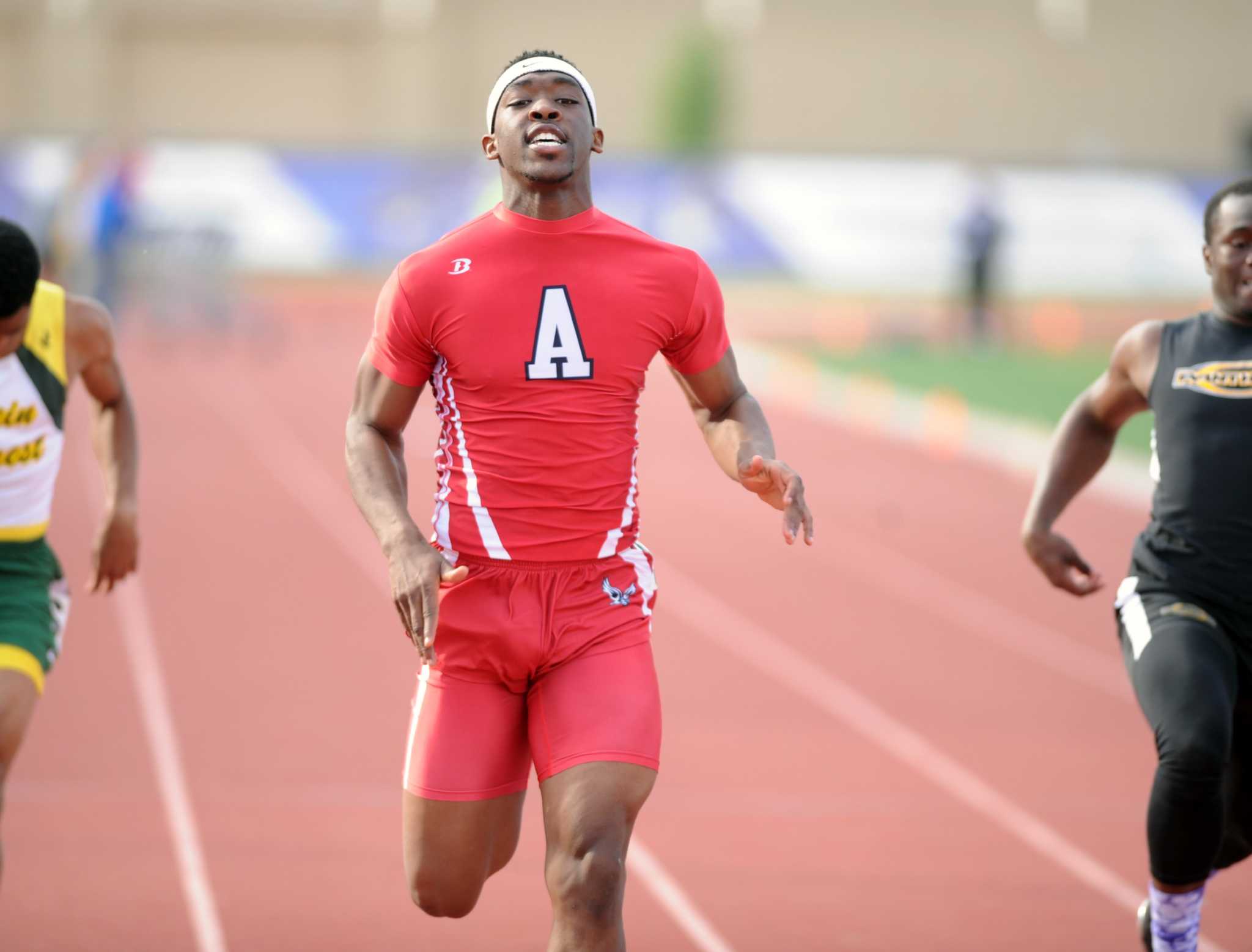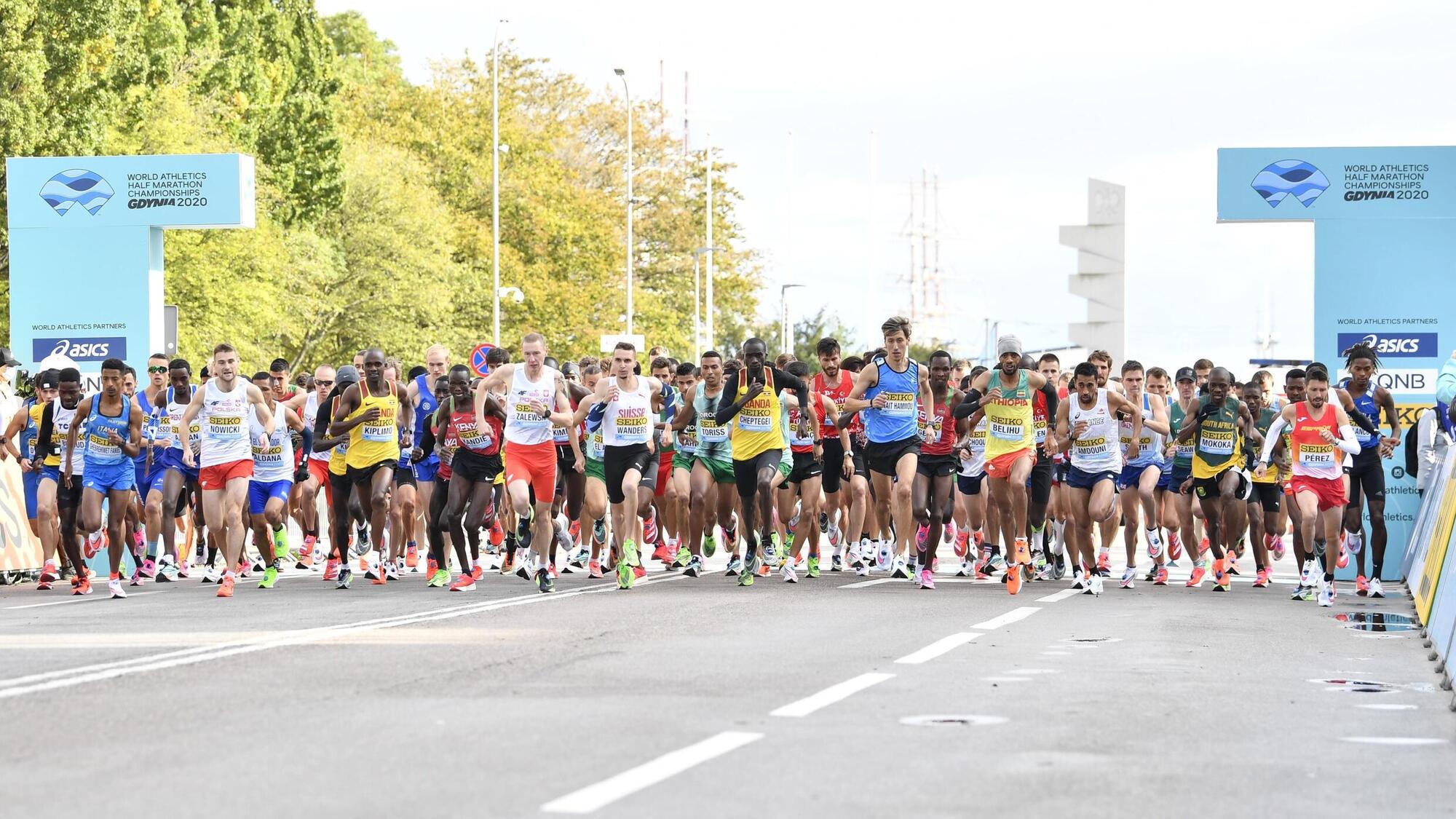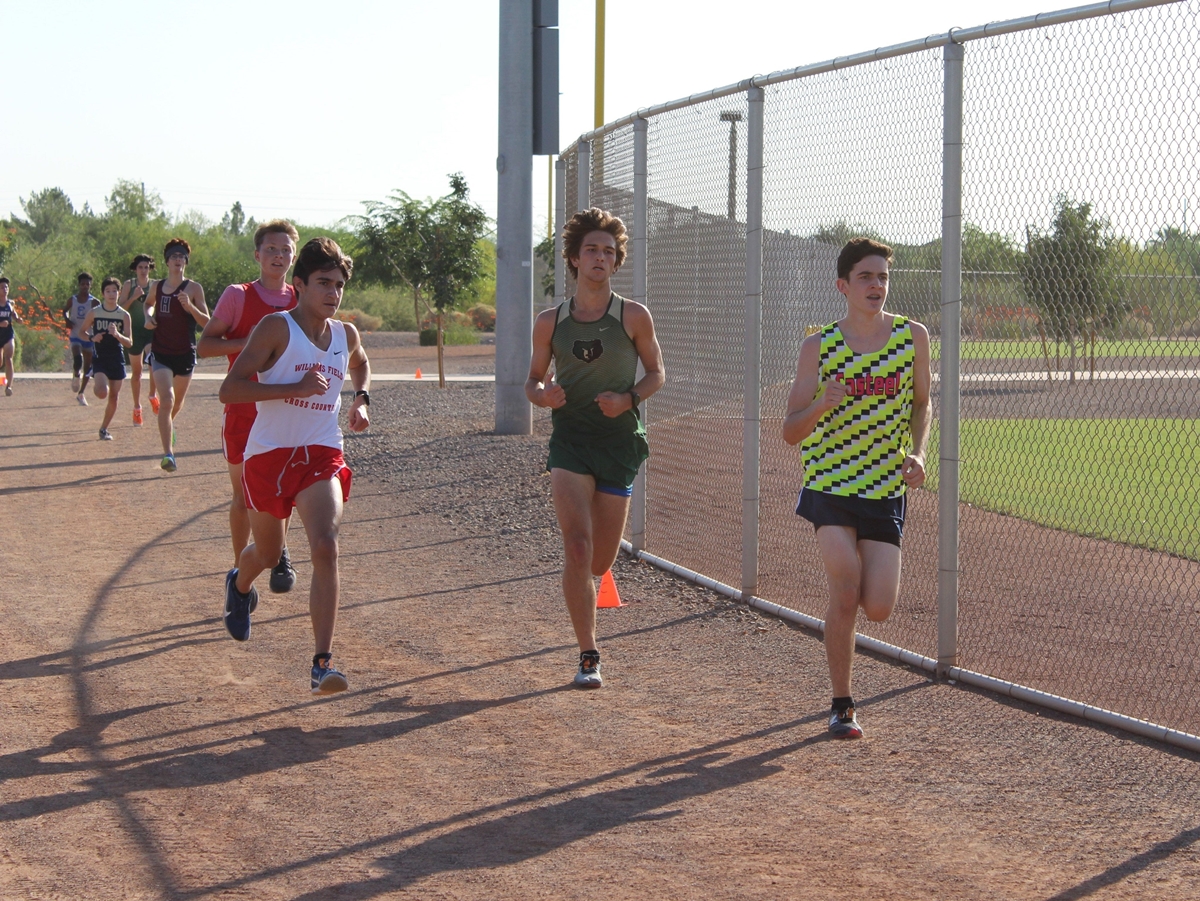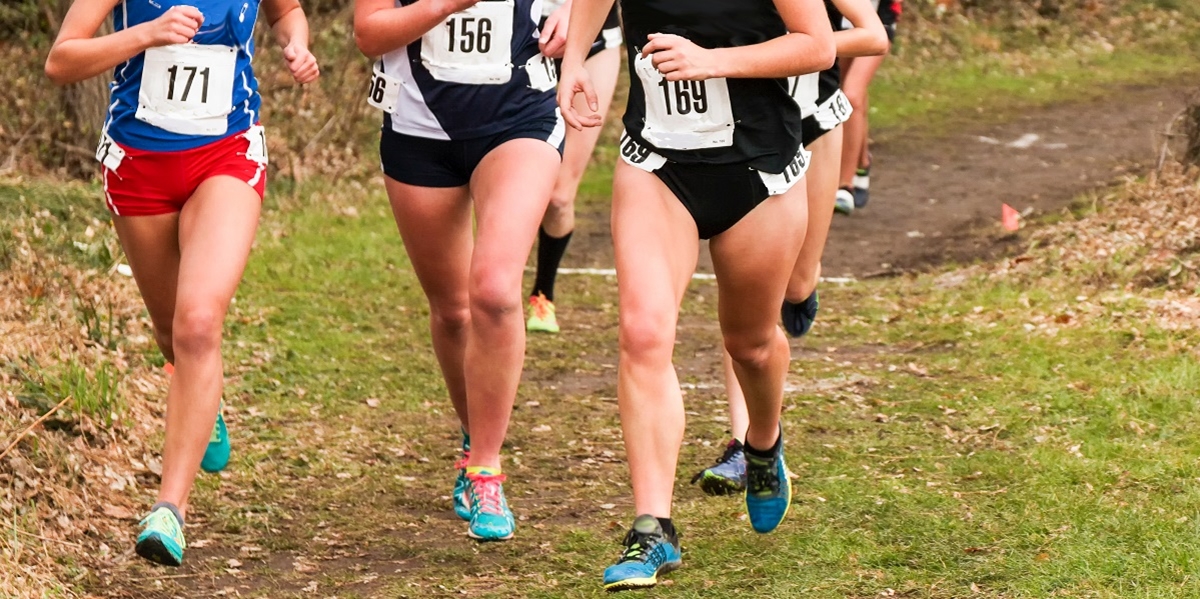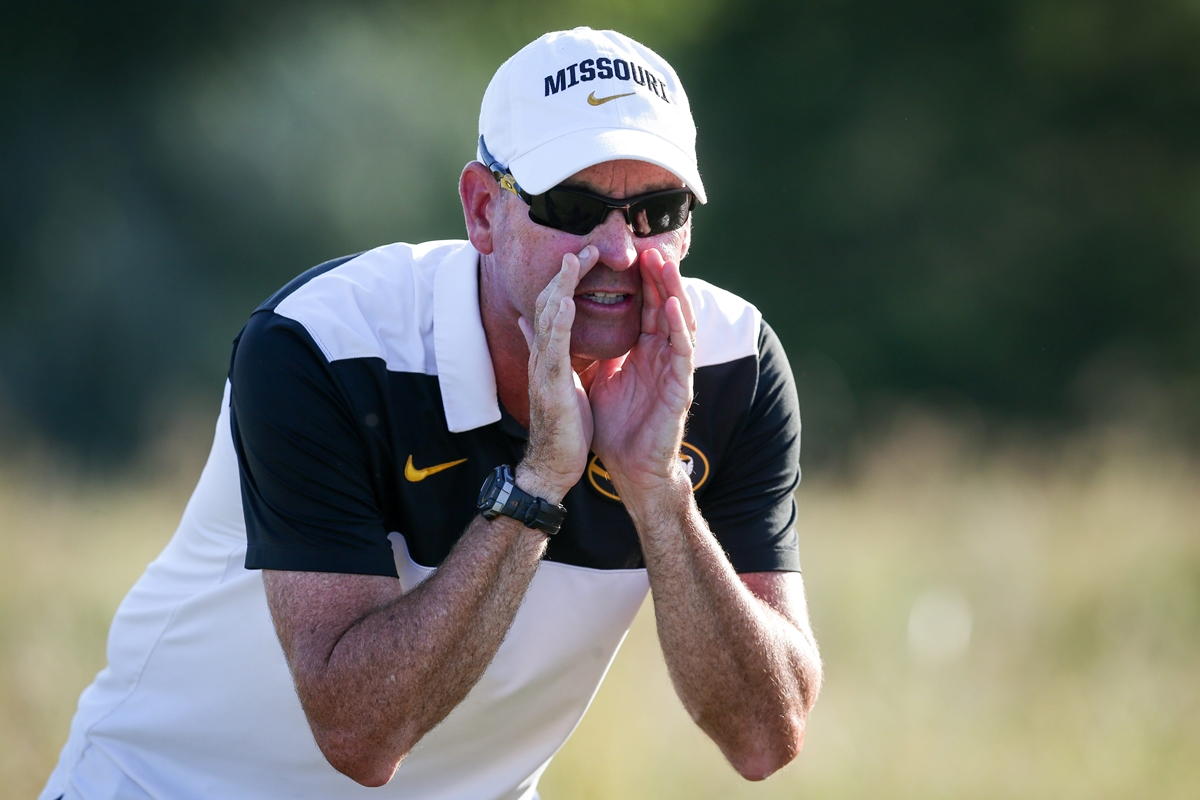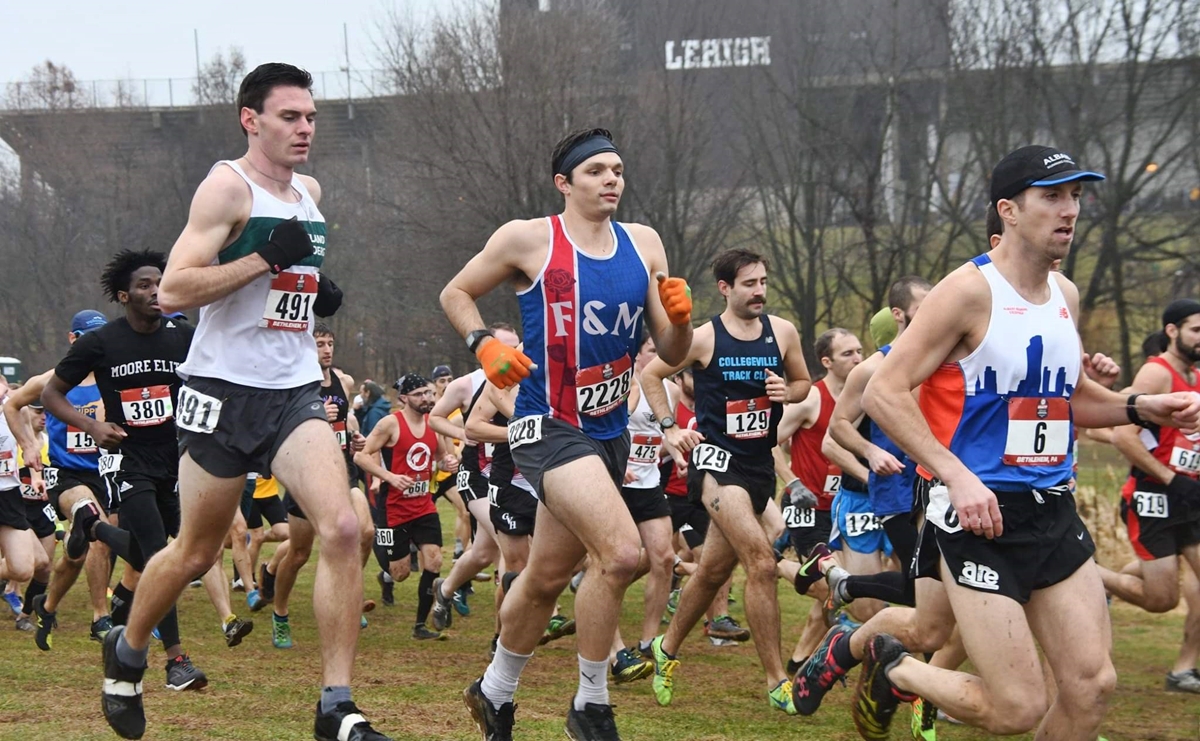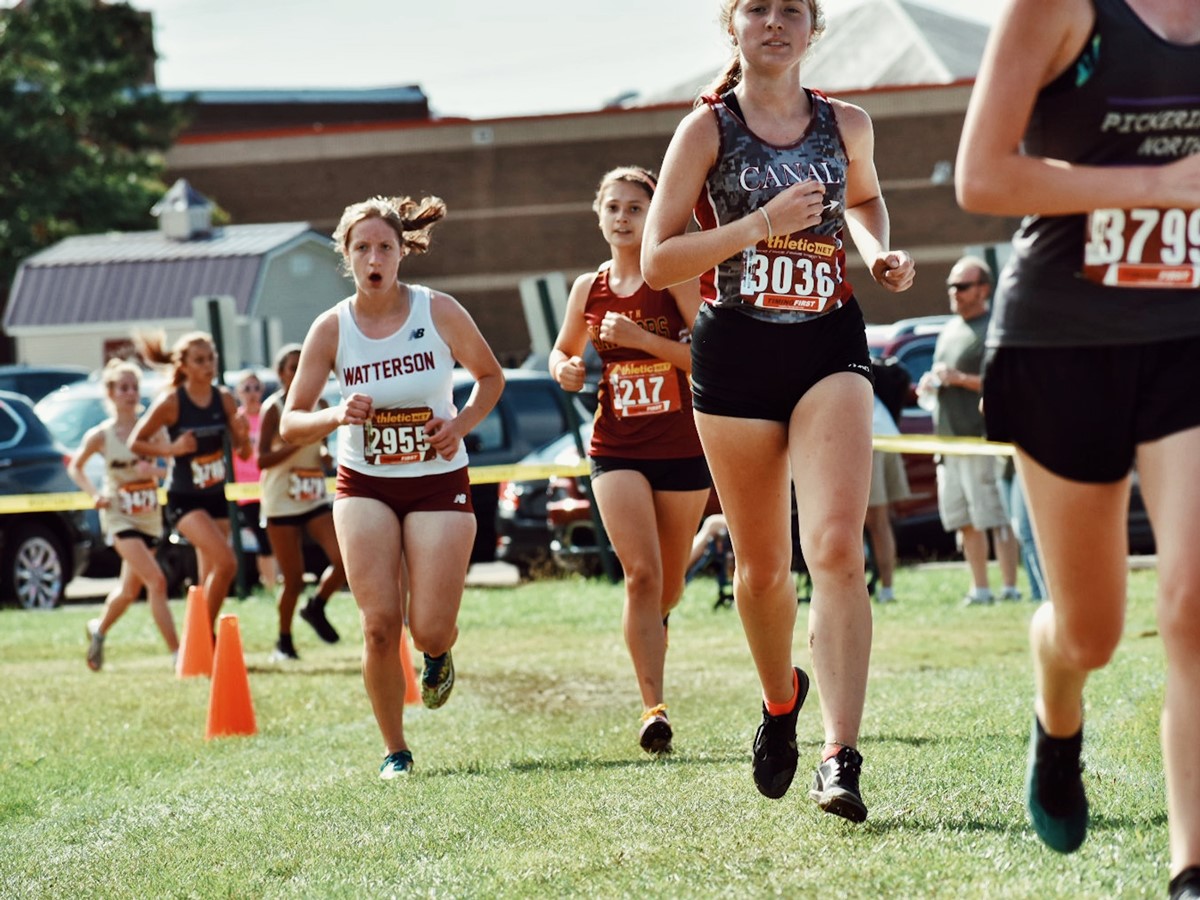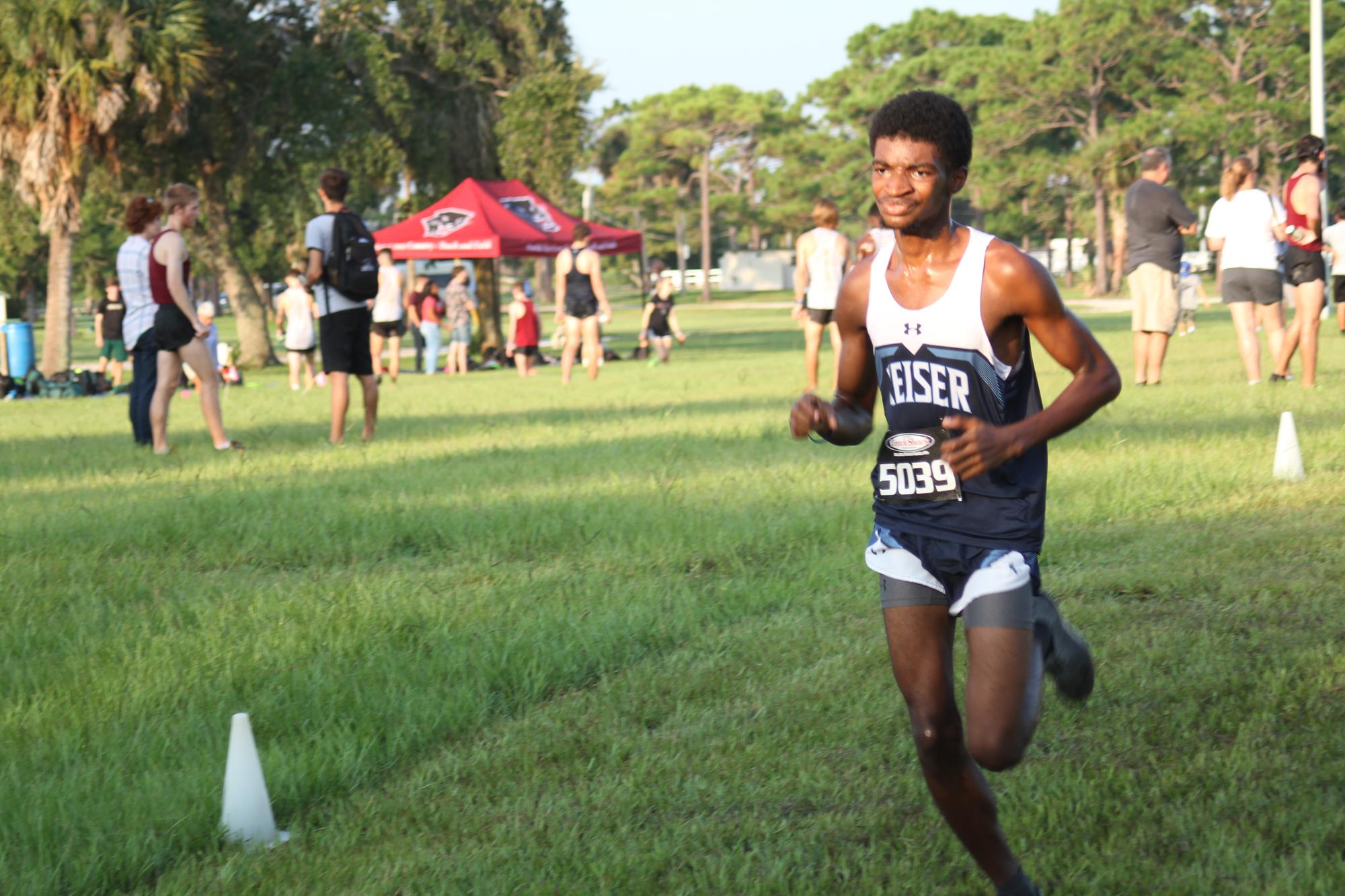

Featured
What Is PR In Cross Country
Modified: January 2, 2024
Discover the essential role of PR in cross country with our featured article. Gain insights into how public relations impacts the sport and drives success.
Introduction
Public Relations (PR) plays a crucial role in the world of sports, including the exhilarating realm of cross country. While cross country may not always receive the same level of media attention as other sports, the importance of PR cannot be undermined. PR professionals in cross country help build and maintain the public image of teams, athletes, and events, playing a pivotal role in promoting the sport and attracting sponsors, fans, and media coverage.
Cross country, often referred to as the ultimate test of endurance, is a sport that involves long-distance running over varied terrains. It challenges athletes to showcase their physical strength, mental resilience, and strategic planning. The sport has gained popularity worldwide, with athletes, coaches, and fans continually seeking new ways to engage and promote cross country.
PR in cross country plays a vital role in connecting teams, athletes, and events with their target audience, conveying their stories, achievements, and values. It involves a strategic approach that combines communication, branding, relationship building, media management, and event promotion. Through effective PR strategies, cross country organizations and athletes can elevate their profiles, attract attention, and create a lasting impact on their stakeholders.
This article delves into the significance of PR in cross country, exploring the strategies employed by PR professionals, their roles in the cross country ecosystem, and the benefits and challenges they face in their efforts to promote the sport. Additionally, we will examine real-life case studies that exemplify successful PR campaigns in cross country, showcasing the power of effective communication and strategic public relations.
Definition of Public Relations (PR)
Before delving into the role of PR in cross country, it is important to understand the concept of Public Relations itself. Public Relations is a strategic communication discipline that aims to build and maintain mutually beneficial relationships between an organization or individual and its publics. The goal of PR is to manage the spread of information, shape public perception, and influence attitudes and behaviors.
PR encompasses various activities and techniques that are aimed at promoting a positive image and enhancing reputation. These activities include media relations, event planning, social media management, crisis communication, community engagement, and internal communications. PR professionals utilize these tools to strategically communicate key messages, manage public perception, and build strong relationships with stakeholders.
In the context of cross country, PR professionals work closely with teams, athletes, event organizers, and sponsors to shape the narrative surrounding the sport. They develop comprehensive PR campaigns that highlight the physical and mental challenges of cross country, celebrate the accomplishments of individual athletes and teams, and showcase the sport’s unique aspects to the public.
Effective PR in cross country involves crafting compelling stories around athletes and events, utilizing various communication channels to reach the target audience. PR professionals leverage both traditional media outlets and digital platforms to promote cross country. They work closely with journalists, sports reporters, and influencers to secure media coverage, generate excitement, and attract fans to the sport.
PR professionals also play a critical role in managing crisis situations and mitigating negative publicity for cross country organizations and athletes. They have the responsibility of addressing controversies, handling sensitive issues, and maintaining transparency with stakeholders. By effectively managing crisis communication, PR professionals can ensure that the reputation and integrity of cross country remain intact.
In the next sections, we will explore the specific strategies employed by PR professionals in cross country, their role in promoting the sport, and the challenges they face along the way.
Overview of Cross Country
Cross country is a highly demanding sport that tests the endurance, strength, and tactical abilities of athletes. It involves running over long distances, typically on natural terrain such as grass, dirt trails, or even through forests. Unlike track and field events that take place on a track, cross country showcases the challenge of navigating unpredictable terrains and overcoming various obstacles along the way.
One of the unique aspects of cross country is the team dynamic. While individual performance is essential, cross country is predominantly a team sport. Teams consist of several athletes who run together, aiming to score fewer points collectively than other teams. This camaraderie fosters teamwork, collaboration, and mutual support among athletes.
Cross country events take place in a competitive and organized setting. Races are typically held at local, regional, national, and international levels. The distance covered in cross country races can vary, ranging from 5 kilometers (3.1 miles) to 10 kilometers (6.2 miles) for men and women, respectively. The courses are designed in loops or out-and-back routes, incorporating challenging sections such as hills, water obstacles, and uneven terrain.
Traditionally, cross country is a fall sport, with competitions taking place during the autumn season. This timing allows athletes to enjoy the colorful scenery and cooler temperatures that characterize this time of the year. It also adds an element of unpredictability as weather conditions can vary, ranging from warm and sunny to cold and rainy.
While cross country may not always receive the same level of mainstream media coverage as other sports, it has a dedicated fan base and attracts participants from various age groups. The sport is commonly practiced in high schools and colleges, with many institutions hosting competitions and championships. Additionally, cross country has grown in popularity among recreational runners, as it provides an opportunity to challenge oneself and experience the beauty of nature.
Overall, cross country is an exciting and physically demanding sport that showcases the determination, endurance, and teamwork of athletes. It offers a unique experience, blending the challenges of running with the beauty of nature, making it a sport loved by both participants and spectators.
Importance of PR in Cross Country
Public Relations (PR) plays a crucial role in the world of cross country, contributing to the growth, promotion, and success of the sport. Here are some reasons why PR is important in cross country:
- Building Awareness: PR helps raise awareness about cross country as a sport, its events, and the achievements of athletes. Through strategic communication and media outreach, PR professionals can generate excitement and attract attention from fans, potential sponsors, and the media.
- Engaging and Expanding the Fan Base: PR efforts in cross country help engage existing fans and attract new ones. By telling compelling stories and highlighting the human side of the sport, PR professionals can create emotional connections with fans, leading to increased support and participation in the sport.
- Promoting Athletes and Teams: PR professionals work closely with athletes and teams to showcase their talent, dedication, and accomplishments. They help create a positive public image, enhance reputation, and secure media coverage for athletes, allowing them to gain recognition and sponsorship opportunities.
- Attracting Sponsors: PR is instrumental in attracting sponsors to support cross country events, teams, and individual athletes. By effectively promoting the benefits of sponsorship and showcasing the visibility and reach of the sport, PR professionals can secure financial support, equipment, and resources.
- Strengthening Relationships with Stakeholders: PR professionals in cross country play a vital role in fostering positive relationships with various stakeholders, including athletes, coaches, event organizers, sponsors, and the media. This helps in building trust, collaboration, and long-term partnerships that are vital for the growth and sustainability of the sport.
- Managing Crisis and Controversies: In the event of a crisis or controversies, PR professionals are responsible for managing the communication and reputation of cross country organizations and athletes. They provide transparent and timely information, address concerns, and mitigate potential damage to the sport’s integrity and public perception.
PR in cross country is not just about generating positive publicity; it is about strategic communication, brand management, and relationship building. By utilizing PR strategies, cross country can gain wider recognition, attract more participants and fans, secure sponsorships, and create a positive and sustainable image. The efforts of PR professionals contribute to the overall success and growth of cross country as a sport.
Strategies for PR in Cross Country
Public Relations (PR) professionals in cross country employ various strategies to effectively communicate and promote the sport. These strategies are designed to engage the target audience, enhance the visibility of athletes and events, and build a positive image of cross country. Here are some key PR strategies used in cross country:
- Storytelling: PR professionals use storytelling techniques to create compelling narratives around athletes, teams, and events. They highlight personal journeys, triumphs, and challenges to evoke emotional connections with the audience. These stories help humanize the sport and connect fans on a deeper level.
- Media Relations: PR professionals build strong relationships with the media to secure and maximize media coverage for cross country. They craft press releases, prepare media kits, and organize press conferences to provide journalists with accurate and timely information. By leveraging these media relations, cross country can reach a wider audience and attract more attention.
- Social Media Presence: PR professionals utilize social media platforms to engage with fans, share updates, and create a sense of community around cross country. They leverage the power of social media to distribute content, interact with followers, and generate buzz before, during, and after events. Social media platforms provide an opportunity to reach a younger and broader audience.
- Event Promotion: PR professionals play a crucial role in promoting cross country events. They collaborate with event organizers to develop marketing strategies, engage local communities, and attract spectators. PR efforts include promoting event highlights, unique features of the course, and encouraging participation from both athletes and spectators.
- Athlete Ambassador Programs: PR professionals establish athlete ambassador programs to create brand advocates and spokespersons for cross country. They select influential athletes who align with the values and ethos of the sport and empower them to represent cross country in public appearances, media interviews, and community outreach initiatives.
- Partnerships and Sponsorships: PR professionals work to secure partnerships and sponsorships that align with the values and target audience of cross country. They approach potential sponsors, pitch the benefits of association with the sport, and negotiate mutually beneficial agreements. These partnerships not only provide financial support but also enhance the credibility and visibility of cross country.
PR strategies in cross country require a comprehensive and integrated approach to engage multiple communication channels. The combination of storytelling, media relations, social media presence, event promotion, athlete ambassador programs, and partnerships helps create a cohesive and impactful PR campaign. By implementing these strategies, PR professionals can effectively promote cross country, engage fans, and attract attention from sponsors, media outlets, and the wider public.
Role of PR Professionals in Cross Country
PR professionals play a pivotal role in the world of cross country, working behind the scenes to shape the narrative, build relationships, and promote the sport. Their role encompasses a wide range of responsibilities and activities that contribute to the success and growth of cross country. Here are some key roles of PR professionals in cross country:
- Strategic Communication: PR professionals develop and execute strategic communication plans for cross country. They identify key messages, target audiences, and the most effective communication channels to reach them. Through their expertise, they ensure that the right information is delivered to the right people at the right time.
- Media Relations: PR professionals establish and maintain relationships with journalists, sports reporters, and other media professionals. They pitch story ideas, coordinate media interviews, and secure media coverage for cross country events and athletes. They act as a bridge between the sport and the media, facilitating positive publicity and exposure.
- Brand Management: PR professionals are responsible for managing and enhancing the brand image of cross country. They develop brand guidelines, ensure consistent messaging, and oversee the use of cross country logos and visual identity. By effectively managing the brand, they create a recognizable and positive image for the sport.
- Event Planning and Promotion: PR professionals work closely with event organizers to plan and promote cross country events. They develop marketing strategies, coordinate media coverage, and engage the local community to maximize attendance and excitement. Their efforts create a memorable experience for athletes and spectators alike.
- Crisis Communication: In times of crisis or controversies, PR professionals play a vital role in managing communication and ensuring transparency. They provide timely and accurate information to stakeholders, address concerns, and minimize potential damage to the reputation of cross country. Their expertise helps maintain trust and integrity within the sport.
- Social Media Management: PR professionals utilize social media platforms to amplify the reach and impact of cross country. They create engaging content, interact with fans, and monitor and respond to online conversations. Their expertise in social media helps build a strong online presence for cross country and connect with a wider audience.
- Relationship Building: PR professionals foster positive relationships with various stakeholders in cross country, including athletes, coaches, event organizers, sponsors, and fans. They engage in community outreach programs, coordinate sponsorships, and facilitate collaborations that strengthen the support network and sustainability of the sport.
The role of PR professionals in cross country is multifaceted and essential to the success of the sport. Their strategic communication, media relations, brand management, event planning, crisis communication, social media management, and relationship building efforts combine to promote cross country, engage stakeholders, and ensure the sport’s continued growth and development.
Benefits of PR in Cross Country
Public Relations (PR) in cross country brings numerous benefits to the sport, athletes, and the wider community. These benefits contribute to the growth, visibility, and reputation of cross country. Here are some key benefits of PR in cross country:
- Increased Visibility: PR efforts help increase the visibility of cross country as a sport. Through media coverage, social media presence, and engaging storytelling, PR professionals bring cross country into the spotlight, attracting attention from sports enthusiasts, potential participants, and sponsors.
- Enhanced Fan Engagement: PR activities in cross country create opportunities for increased fan engagement. By connecting with fans through social media platforms, sharing inspiring stories, and providing behind-the-scenes access, PR professionals cultivate a loyal and passionate fan base that supports athletes and attends events.
- Boosted Sponsorship Opportunities: PR strategies in cross country attract more sponsorship opportunities for athletes, teams, and events. By effectively showcasing the positive image of cross country and its values, PR professionals entice sponsors who wish to align their brand with the sport’s principles, resulting in financial support and resources for the development of the sport.
- Elevated Athlete Profiles: PR efforts play a crucial role in elevating the profiles of cross country athletes. Through media interviews, feature stories, and social media campaigns, PR professionals shine a spotlight on athletes’ accomplishments, personalities, and journeys. This increased exposure can lead to endorsement deals, media appearances, and opportunities for professional advancement.
- Positive Public Perception: PR professionals shape the public perception of cross country by highlighting the sport’s values, community involvement, and positive impact. Through effective communication and storytelling, PR efforts showcase cross country as a sport that promotes health, teamwork, and personal growth, fostering a positive image among the general public.
- Improved Community Connections: PR professionals in cross country establish and strengthen connections within the community. By organizing community outreach programs, engaging with local organizations, and promoting grassroots initiatives, PR efforts contribute to the growth and inclusivity of cross country at a regional and local level.
- Inspiration and Legacy: PR activities in cross country inspire future generations of athletes by sharing stories of perseverance, dedication, and triumph. By showcasing the achievements of cross country athletes, PR professionals motivate aspiring individuals to pursue the sport and contribute to its rich legacy.
Overall, PR in cross country brings a multitude of benefits that enhance the sport’s visibility, engagement, sponsorship opportunities, and public perception. The efforts of PR professionals contribute to the growth of cross country, inspire athletes and fans, and create a positive impact on the community.
Challenges in PR for Cross Country
While Public Relations (PR) plays a vital role in promoting cross country, PR professionals in the sport face various unique challenges. These challenges require adaptive strategies and innovative solutions to effectively navigate and overcome. Here are some of the key challenges faced by PR professionals in cross country:
- Limited Media Coverage: Cross country often receives limited media coverage compared to other popular sports. This can make it challenging for PR professionals to secure media placements and generate widespread exposure for the sport and its athletes. Innovative approaches, such as leveraging social media and building relationships with niche media outlets, can help overcome this challenge.
- Seasonal Nature of the Sport: Cross country is a seasonal sport, typically taking place during the autumn months. The short duration of the competitive season can make it challenging to maintain consistent media coverage and public interest throughout the year. PR professionals need to capitalize on the sport’s unique aspects, such as the picturesque fall landscapes or the physical and mental challenges, to sustain interest during the off-season.
- Lack of Mainstream Appeal: Cross country may not always have the same mainstream appeal as major team sports. This can pose challenges in attracting sponsors and securing media coverage outside of dedicated running or athletics publications. PR professionals must emphasize the sport’s unique qualities and align with sponsors who value cross country’s core values and target audience.
- Overlapping Events: Cross country events, particularly at the regional and national levels, can overlap with other major sporting events. This can result in media attention being diverted elsewhere, making it difficult to capture the spotlight for cross country. PR professionals need to plan strategically to ensure proper timing and maximize media coverage during these busy periods.
- Perception Challenges: Some individuals may perceive cross country as a less glamorous or challenging sport compared to other high-profile sports. PR professionals must address these misperceptions and showcase the physical and mental demands, team dynamics, and the achievements of cross country athletes to combat any negative stereotypes.
- Limited Resources: Cross country programs, especially at the high school or grassroots level, may have limited resources to invest in PR efforts. This can place constraints on the ability to develop comprehensive PR campaigns or hire dedicated PR professionals. Creative and cost-effective strategies, such as leveraging social media and engaging community partners, can help overcome resource limitations.
Despite these challenges, PR professionals in cross country can overcome them by utilizing innovative strategies, building strategic partnerships, and adapting to the evolving media landscape. By effectively communicating the unique aspects of the sport, engaging with the target audience, and showcasing the accomplishments of athletes, PR professionals can overcome these challenges and promote cross country successfully.
Case Studies in PR for Cross Country
Examining successful case studies in Public Relations (PR) for cross country provides valuable insights into effective strategies and tactics used to promote the sport. Here are two notable examples:
Case Study 1: The Boston Marathon
The Boston Marathon, one of the most prestigious road races in the world, showcases the power of PR in cross country. The event attracts elite athletes, amateurs, and spectators from around the globe. The PR team behind the Boston Marathon utilizes various strategies to ensure its success:
- Storytelling: The PR team shares the remarkable stories of runners, their training journeys, inspirational moments, and personal triumphs. These stories create an emotional connection with the audience and capture widespread media attention.
- Media Partnerships: The team builds strong relationships with local, national, and international media outlets, securing extensive coverage before, during, and after the event. Through strategic media partnerships, the Boston Marathon gains visibility and attracts runners and sponsors.
- Community Engagement: The PR team engages with local communities along the marathon route, fostering a sense of pride and excitement. This community involvement generates positive word-of-mouth, promotes spectator attendance, and encourages participation from athletes around the world.
- Social Media Amplification: The Boston Marathon’s social media presence plays a key role in engaging with runners, fans, and the broader community. Regular updates, behind-the-scenes content, and interactive campaigns help generate buzz and create anticipation for the event.
Case Study 2: Parkrun
Parkrun, a global phenomenon promoting free, weekly, timed 5-kilometer runs in local parks, demonstrates a grassroots PR success story:
- Word-of-Mouth Advocacy: Parkrun’s PR strategy relies heavily on word-of-mouth advocacy. Participants and volunteers share their positive experiences with friends, family, and colleagues, encouraging wider community participation and engagement.
- Volunteer Engagement: The PR team actively engages volunteers, recognizing their contributions and fostering a sense of community ownership. These volunteers become ambassadors, promoting Parkrun through their personal networks and social media channels.
- Partnerships: Parkrun forms partnerships with local councils, running clubs, and healthcare providers to amplify their reach and impact. These collaborations not only provide additional resources and support but also generate media coverage and community involvement.
- Content Generation: Parkrun leverages user-generated content and participant stories to fuel their PR efforts. By highlighting the diverse stories, achievements, and personal transformations, Parkrun creates an emotional connection with the audience and inspires participation.
These case studies highlight the importance of storytelling, media partnerships, community engagement, and leveraging user-generated content in successful PR campaigns for cross country. By adopting similar strategies, cross country organizations and events can increase their visibility, attract participants and sponsors, and create a lasting impact on the sport.
Conclusion
Public Relations (PR) plays a vital role in the world of cross country, enabling the sport to thrive, engage fans, attract sponsors, and foster a positive image. PR professionals in cross country employ various strategies such as storytelling, media relations, social media management, and event promotion to promote the sport effectively.
Through strategic communication and effective PR campaigns, cross country gains visibility, engages fans, and attracts attention from sponsors, media outlets, and the wider public. These efforts highlight the physical and mental challenges of cross country, celebrate the achievements of athletes, and showcase the unique aspects of the sport.
While challenges such as limited media coverage, seasonal nature of the sport, and stereotype challenges exist in PR for cross country, PR professionals continue to overcome these hurdles through innovative strategies and adaptability. They emphasize captivating narratives, cultivate media relationships, harness the power of social media, and engage the community to overcome these challenges and promote cross country successfully.
Real-life case studies, such as those of the Boston Marathon and Parkrun, demonstrate the effectiveness of PR strategies in elevating the profile of cross country. By sharing inspiring stories, building partnerships, and engaging communities, these case studies showcase the power of strategic communication to create a lasting impact on the sport.
Overall, with PR professionals at the helm, cross country can continue to grow, engage fans, attract sponsors, and create a positive image. The role of PR in cross country is essential in promoting the sport, building relationships, and ensuring its long-term success. By leveraging effective PR strategies, cross country can continue to captivate audiences, inspire athletes, and leave a lasting legacy in the world of sports.

